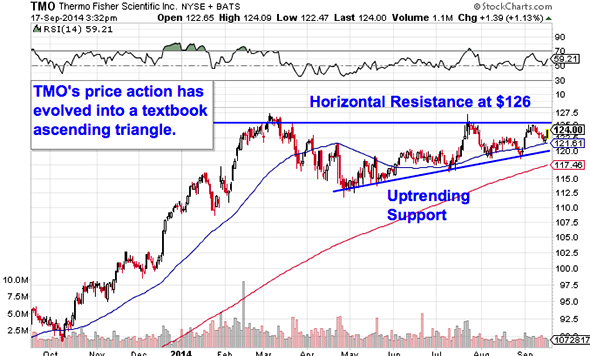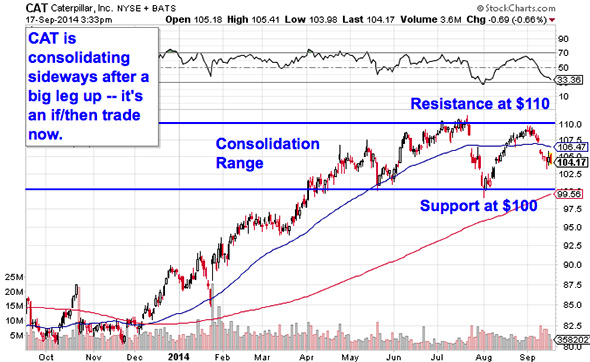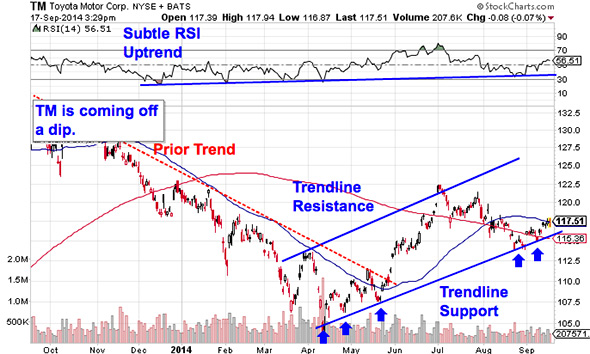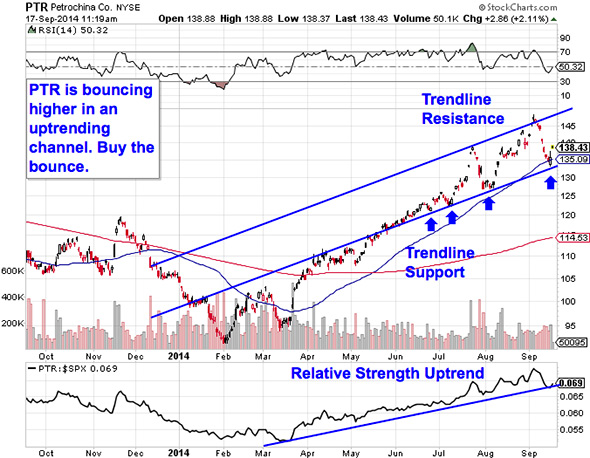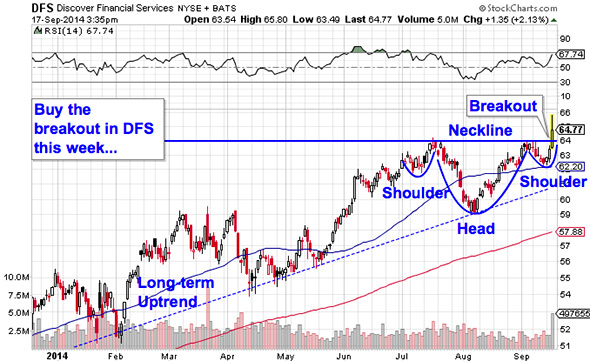Exchange traded funds (ETFs) and closed-end funds (CEFs) are composed of many different individual securities. This usually results in uneven dividend distributions. Some funds have tried to address this with a managed distribution policy. In short, a managed distribution policy is management's commitment to make a fixed periodic dividend payment.
How Managed Distribution Policies Work
Since many funds distribute most of their income to shareholders in order to avoid taxation, funds with a managed distribution policy sometimes have cash left over at year-end that needs to be distributed. This is is normally done as a "special" one-time dividend. However, if the fund generates insufficient cash to cover the dividend, the fund is forced to sell some investments to cover the cash short-fall. In turn, this portion of the short-fall is treated as a return of capital and the fund now has lower assets to generate future income.
Advantages of Managed Distribution Policies
According to a Gabelli Funds report, managed distribution policies offer several advantages, including:1. Lower difference between the fund's market price and its NAV per share.2. Provides support during periods when the stock market is in a decline.3. Provides a measurable performance target for the investment adviser.Below are several high-yield funds from CEFA that have a managed distribution policy (yields as of December 16):Aberdeen Australia Eqty (IAF)- Distribution Yield: 10.4%- Income Yield: 3.46%Bexil Advisers LLC (DNI)- Distribution Yield: 11.1%- Income Yield: 3.56%BlackRock En Capital&Inc (CII)- Distribution Yield: 8.78%- Income Yield: 2.34%Cornerstone Strat Value (CLM)- Distribution Yield: 18.77%- Income Yield: 1.83%Cornerstone Total Return (CRF)- Distribution Yield: 19.10%- Income Yield: 0.85%Delaware Inv Div & Inc (DDF)- Distribution Yield: 6.70%- Income Yield: 5.26%Gabelli Equity Trust (GAB)- Distribution Yield: 7.58%- Income Yield: 1.54%Gabelli Utility Trust (GUT)- Distribution Yield: 9.45%- Income! Yield: 2.84%MFS Special Value Trust (MFV)- Distribution Yield: 9.60%- Income Yield: 5.73%Nuveen Tx-Adv TR Strat (JTA)- Distribution Yield: 6.70%- Income Yield: 3.12%TCW Strategic Income (TSI)- Distribution Yield: 10.54%- Income Yield: 7.88%Zweig Total Return (ZTR)- Distribution Yield: 7.27%- Income Yield: 1.95%As noted in the Gabelli report, a managed distribution policy may create confusion regarding the true current yield since the reported yield includes the return of capital portion. You can see the disparity above between the income yield and the distribution (reported) yield.If you are looking for a sustainable and growing dividend, you may want to consider some blue-chip dividend stocks such as these with a Free Cash Flow Payout less than 50%, 50+ years of consecutive dividend increases and a 2%+ yield:3M Co. (MMM) is a diversified global company provides enhanced product functionality in electronics, health care, industrial, consumer, office, telecommunications, safety & security and other markets via coatings, sealants, adhesives, and other chemical additives. Yield: 2.0%Illinois Tool Works Inc. (ITW) is a diversified manufacturer operates a portfolio of 60 business units that serve industrial and consumer markets globally. Yield: 2.1%Colgate-Palmolive Company (CL) is a major consumer products company that markets oral, personal and household care and pet nutrition products in more than 200 countries and territories. Yield: 2.1%Emerson Electric Co. (EMR) designs and supplies product technology, and delivers engineering services and solutions to a wide range of industrial, commercial and consumer markets around the world. Yield: 2.5%Genuine Parts Co. (GPC) is a leading wholesale distributor of automotive replacement parts, industrial parts and supplies, and office products. Yield: 2.6%Cincinnati Financial Corp. (CINF) is an insurance holding company that primarily markets property and casualty coverage. It also conducts life insurance and asset management operations. Yield: 3.2%When investi! ng in a f! und with a managed distribution policy, it is important not to confuse predictable cash flows with assured cash flows. A managed distribution policy means that the funds management is making an attempt to smooth out cash flows, but there is no guarantee they will be successful. Yield:Full Disclosure: Long ITW, EMR, GPC, CINF in my Dividend Growth Portfolio. See a list of all my dividend growth holdings here.Related Articles- 8 Higher-Yielding Consumer Stocks With A History of Rising Dividends- 10 Dividend Stocks For The Ultimate In Deferred Gratification- 6 Healthcare Stocks With Growing Dividends Yeilding In Excess of 2%- Why We Are Dividend Growth Investors- 6 Dividend Growth Stocks With Very Little Debt
About the author:
Dividends4Life
Visit Dividends4Life at:
http://www.dividend-growth-stocks.com/
| Currently 5.00/512345 Rating: 5.0/5 (1 vote) |

Subscribe via Email

Subscribe RSS Comments Please leave your comment:
More GuruFocus Links
| Latest Guru Picks | Value Strategies |
| Warren Buffett Portfolio | Ben Graham Net-Net |
| Real Time Picks | Buffett-Munger Screener |
| Aggregated Portfolio | Undervalued Predictable |
| ETFs, Options | Low P/S Companies |
| Insider Trends | 10-Year Financials |
| 52-Week Lows | Interactive Charts |
| Model Portfolios | DCF Calculator |
RSS Feed  | Monthly Newsletters |
| The All-In-One Screener | Portfolio Tracking Tool |
MORE GURUFOCUS LINKS
| Latest Guru Picks | Value Strategies |
| Warren Buffett Portfolio | Ben Graham Net-Net |
| Real Time Picks | Buffett-Munger Screener |
| Aggregated Portfolio | Undervalued Predictable |
| ETFs, Options | Low P/S Companies |
| Insider Trends | 10-Year Financials |
| 52-Week Lows | Interactive Charts |
| Model Portfolios | DCF Calculator |
RSS Feed  | Monthly Newsletters |
| The All-In-One Screener | Portfolio Tracking Tool |
MMM STOCK PRICE CHART

136.99 (1y: +47%) $(function() { var seriesOptions = [], yAxisOptions = [], name = 'MMM', display = ''; Highcharts.setOptions({ global: { useUTC: true } }); var d = new Date(); $current_day = d.getDay(); if ($current_day == 5 || $current_day == 0 || $current_day == 6){ day = 4; } else{ day = 7; } seriesOptions[0] = { id : name, animation:false, color: '#4572A7', lineWidth: 1, name : name.toUpperCase() + ' stock price', threshold : null, data : [[1356501600000,93.07],[1356588000000,92.64],[1356674400000,91.78],[1356933600000,92.85],[1357106400000,94.78],[1357192800000,94.67],[1357279200000,95.37],[1357538400000,95.49],[1357624800000,95.5],[1357711200000,96.41],[1357797600000,96.89],[1357884000000,96.28],[1358143200000,97.08],[1358229600000,97.29],[1358316000000,97.6],[1358402400000,98.08],[1358488800000,98.74],[1358834400000,99.33],[1358920800000,99.49],[1359007200000,99.67],[1359093600000,100.59],[1359352800000,100.65],[1359439200000,101.81],[1359525600000,100.8],[1359612000000,100.55],[1359698400000,101.56],[1359957600000,100.77],[1360044000000,101.49],[1360130400000,102.69],[1360216800000,102.22],[1360303200000,102.66],[1360562400000,102.62],[1360648800000,103.46],[1360735200000,102.86],[1360821600000,102.78],[1360908000000,103.23],[1361253600000,104.18],[1361340000000,103.15],[1361426400000,102.72],[1361512800000,103.54],[1361772000000,101.75],[1361858400000,102.31],[1361944800000,103.57],[1362031200000,104],[1362117600000,103.77],[1362376800000,103.28],[1362463200000,104.45],[1362549600000,104.66],[1362636000000,104.54],[1362722400000,105.71],[1362978000000,105.81],[1363064400000,105.13],[1363150800000,105.09],[1363237200000,106.02],[1363323600000,106.4],[1363582800000,105.41],[1363669200000,105.18],[1363755600000,105.66],[1363842000000,104.94],[1363928400000,106.42],[1364187600000,105.17],[1364274000000,106.07],[1364360400000,105.29],[1364446800000,106.31],[1364792400000,105.65],[1364878800000,106.52],[1364965200000,105.68],[1365051600000,105.82],[1365138000000,105.78],[13653

